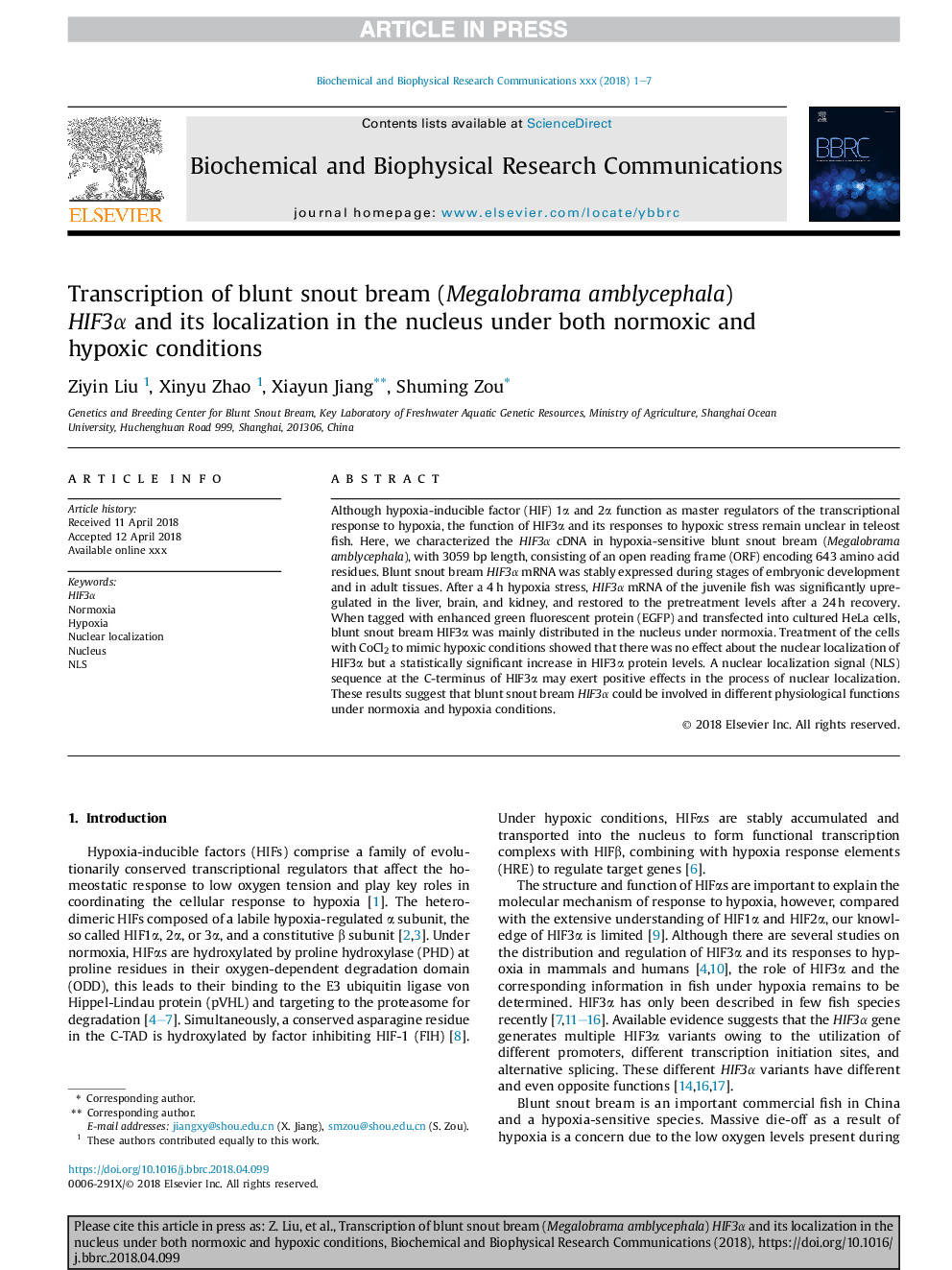| Article ID | Journal | Published Year | Pages | File Type |
|---|---|---|---|---|
| 8292920 | Biochemical and Biophysical Research Communications | 2018 | 7 Pages |
Abstract
Although hypoxia-inducible factor (HIF) 1α and 2α function as master regulators of the transcriptional response to hypoxia, the function of HIF3α and its responses to hypoxic stress remain unclear in teleost fish. Here, we characterized the HIF3α cDNA in hypoxia-sensitive blunt snout bream (Megalobrama amblycephala), with 3059 bp length, consisting of an open reading frame (ORF) encoding 643 amino acid residues. Blunt snout bream HIF3α mRNA was stably expressed during stages of embryonic development and in adult tissues. After a 4â¯h hypoxia stress, HIF3α mRNA of the juvenile fish was significantly upregulated in the liver, brain, and kidney, and restored to the pretreatment levels after a 24â¯h recovery. When tagged with enhanced green fluorescent protein (EGFP) and transfected into cultured HeLa cells, blunt snout bream HIF3α was mainly distributed in the nucleus under normoxia. Treatment of the cells with CoCl2 to mimic hypoxic conditions showed that there was no effect about the nuclear localization of HIF3α but a statistically significant increase in HIF3α protein levels. A nuclear localization signal (NLS) sequence at the C-terminus of HIF3α may exert positive effects in the process of nuclear localization. These results suggest that blunt snout bream HIF3α could be involved in different physiological functions under normoxia and hypoxia conditions.
Related Topics
Life Sciences
Biochemistry, Genetics and Molecular Biology
Biochemistry
Authors
Ziyin Liu, Xinyu Zhao, Xiayun Jiang, Shuming Zou,
